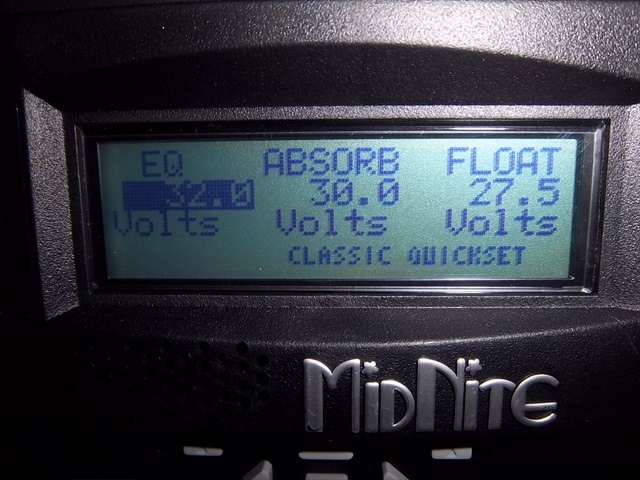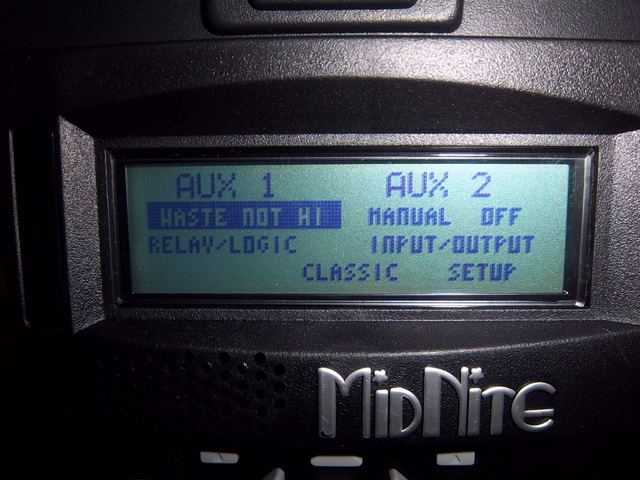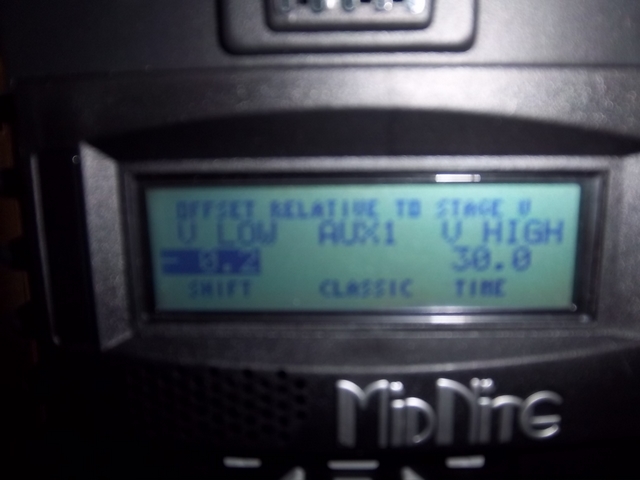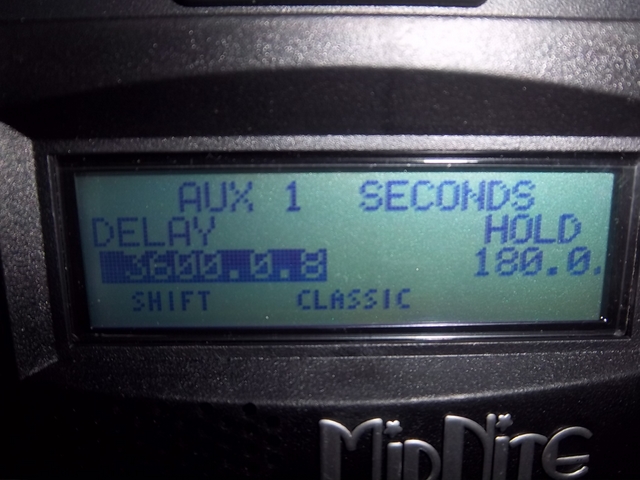I hope I can get this set up properly. That's why I'm asking.
I got Aux 1 set up on my solar Classic to turn on a single phase 2,000 watt water heater element powered off the inverters. I want it to come on when the bank is in float stage, then shut off when the controller drops out of float.
The purpose is to keep the panels at full power, and use the power, instead of having the controller "throttle them back" because the bank gets charged up. I set Aux 1 to come active in Float. But what happens there is that if the sun goes under a cloud the controller switches from "Float" to "Float MPPT" and it starts cycling the relay on and off real fast.
So I decided to try a different setting.
The following photos show the settings in the controller:
This is the charge voltages:

I'm using this Aux function to activate the port:

This is where it gets confusing. I set the trigger voltage at 30.0, which is the same as absorb voltage. I haven't set the offset yet.

I put a delay time of 1 hour on it so the Aux 1 port doesn't become active unless the bank has been absorbing for one hour. I put a hold time on of 180 seconds, which the way I understand it, will hold the port active for 3 minutes after it drops out of this charge stage.

What I don't understand is what I should set the offset at? The way I read the manual, it will bring the Aux 1 port active after the one hour timer expires if the voltage is above the high set point, minus the offset.
Or it's possible I'm not understanding this Aux function at all.
--
Chris